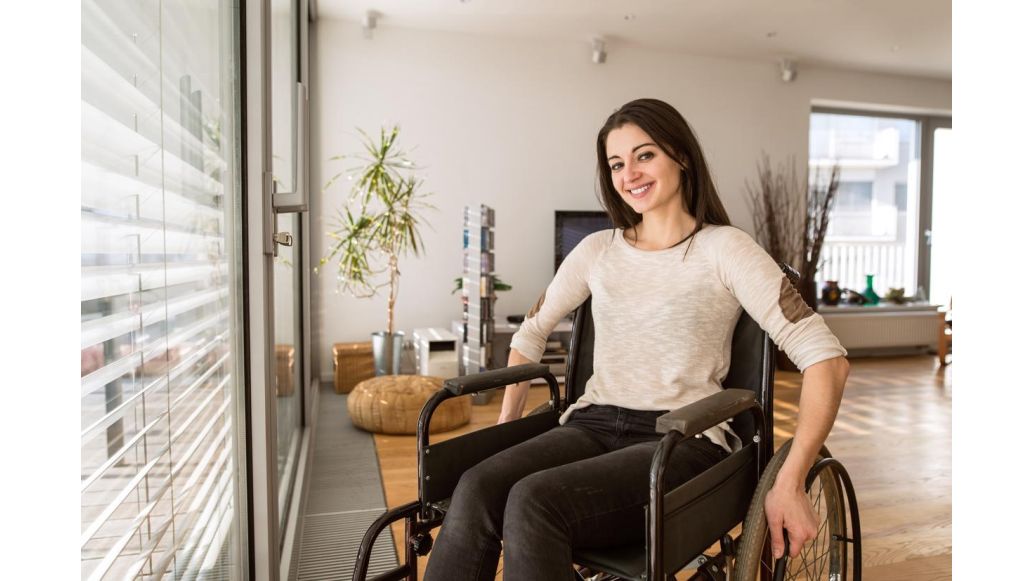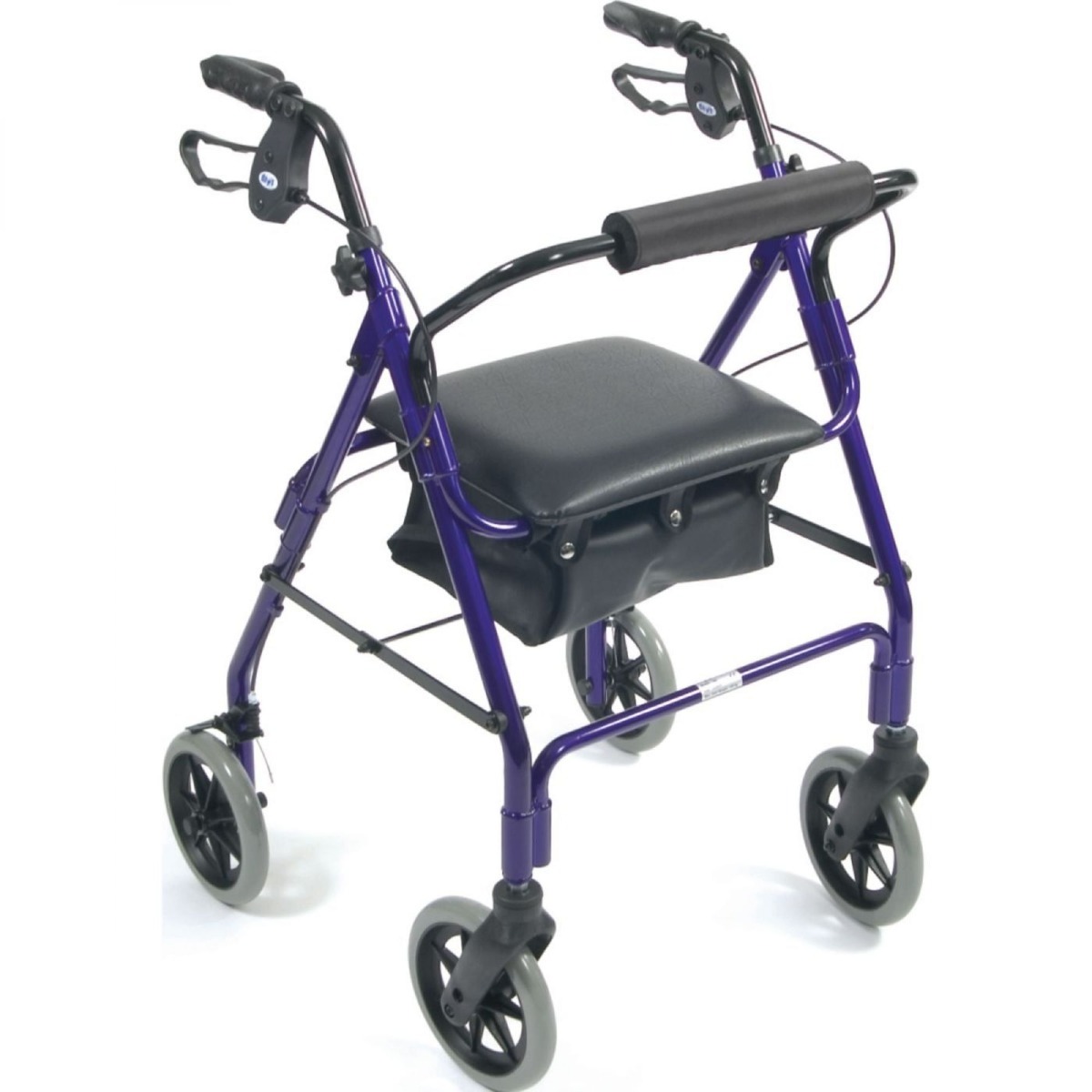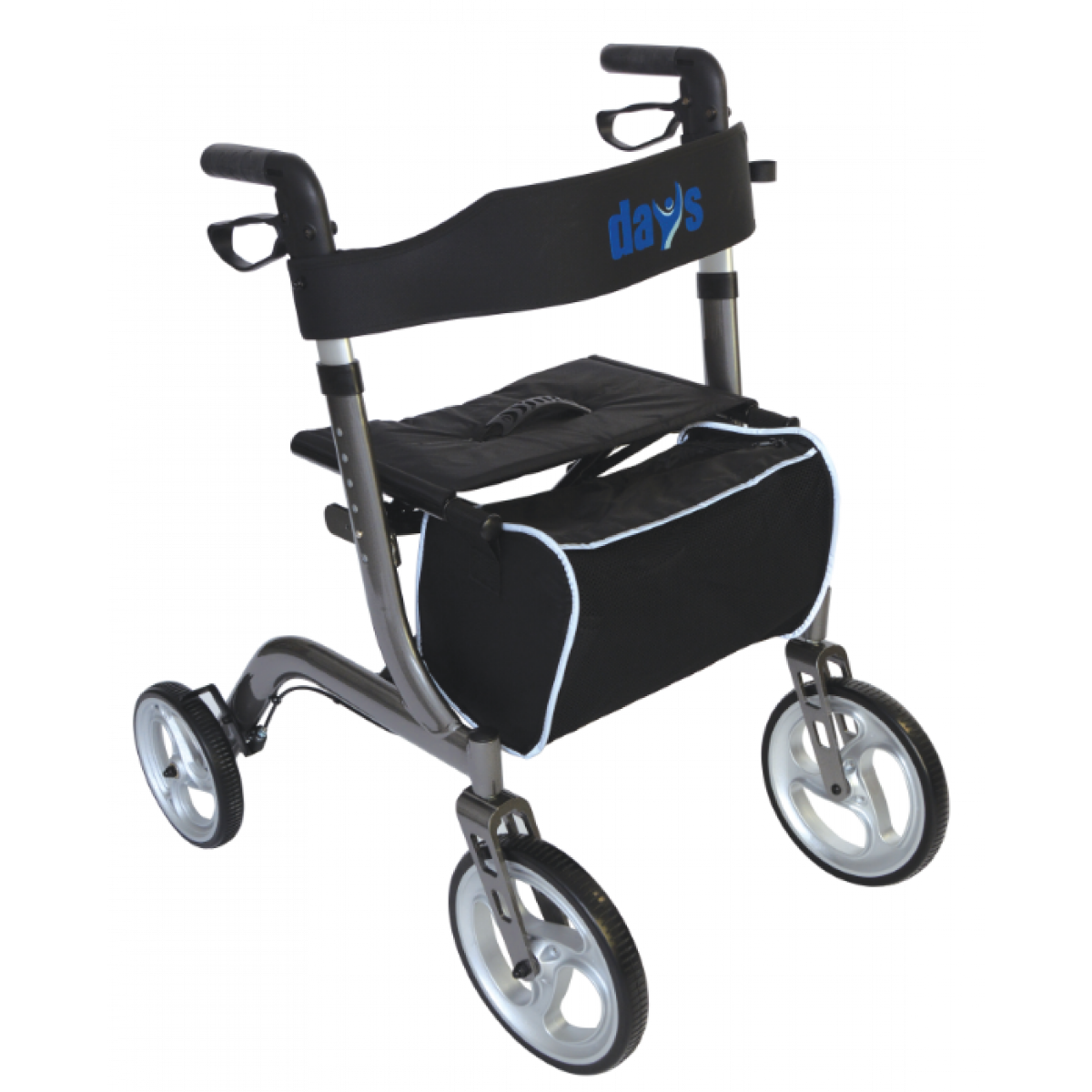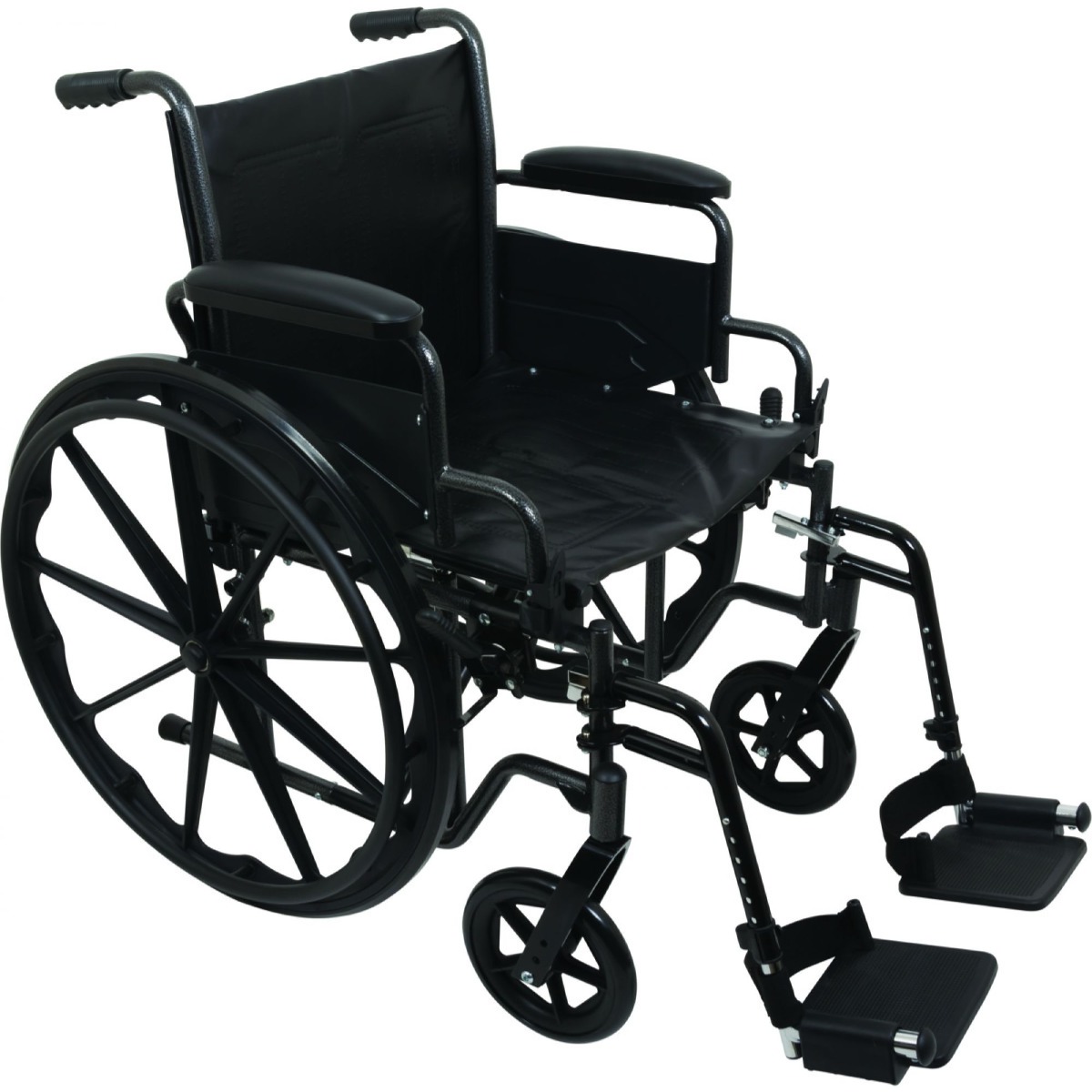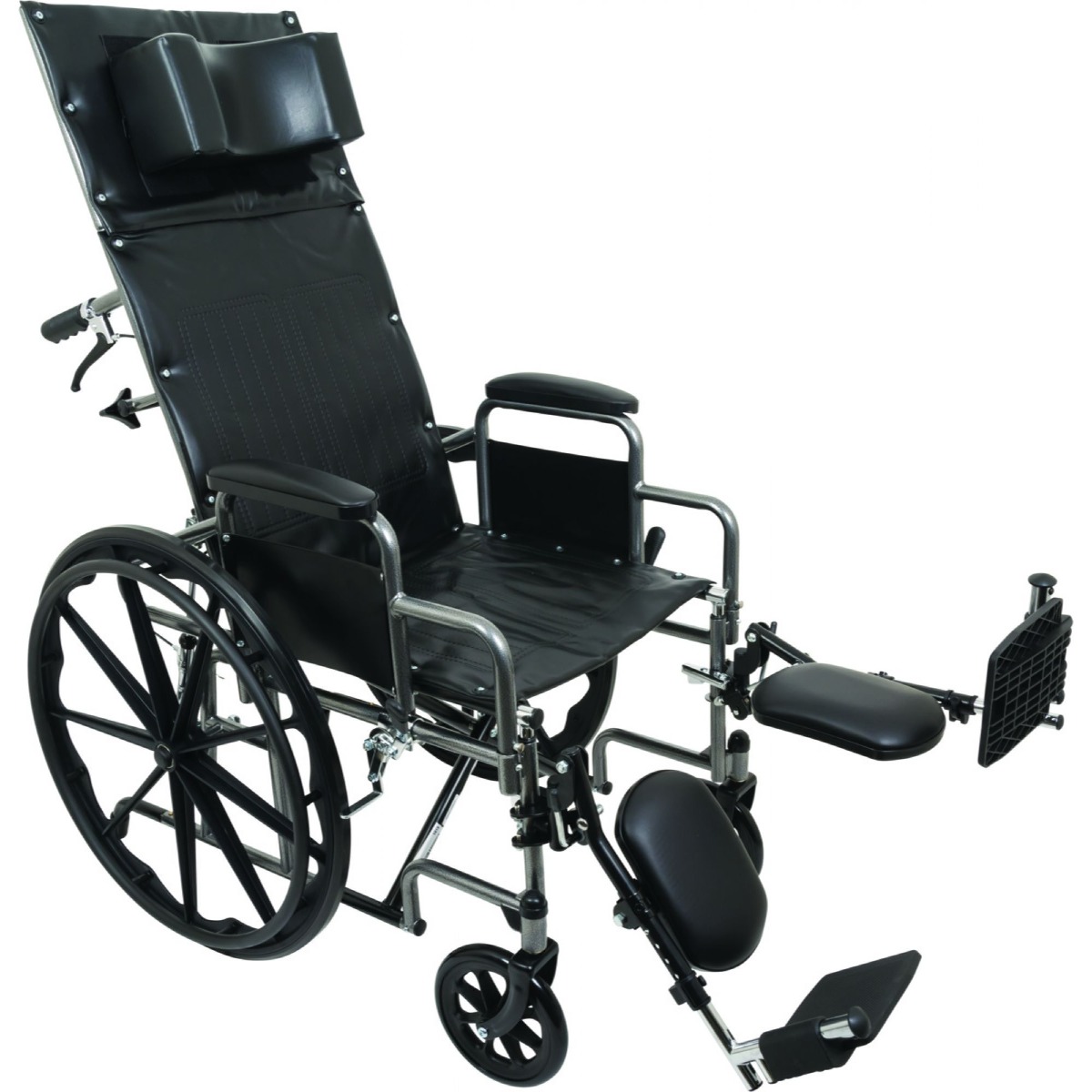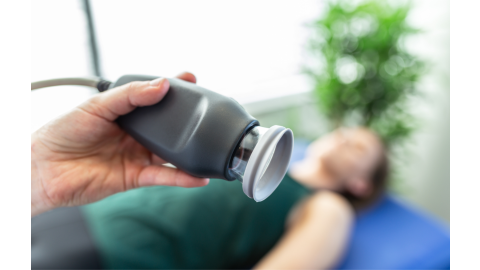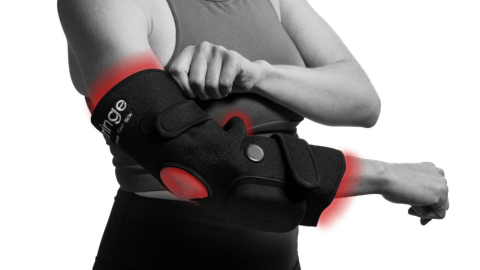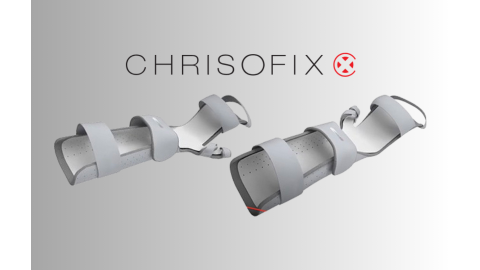As their symptoms progress, people with Huntington’s disease (HD) are at an increased risk for falls and injuries.1 Mobility aids, like rollators, can help you continue to walk safely. Are you doing everything you can to stay safe?
Learn more!
- What symptoms of Huntington’s Disease make mobility more difficult?
- The Best Mobility Aids for People with Huntington’s Disease
- More Information
What symptoms of Huntington’s Disease make mobility more difficult?
Huntington’s disease can cause a variety of symptoms that impair your mobility. This includes:
- Bradykinesia
- Slowness of movement
- Akinesia
- Delayed start of movement
- Lack of coordination
- Uncoordinated movement
- Motor impersistence
- Inability to sustain a movement (like holding a fork without dropping it)
- Problems with sequencing
- Difficulty performing sequenced movements (like standing up from a chair or getting out of bed)
- Chorea
- Brief irregular movements that may progress to all four limbs
- Dystonia
- Abnormal, sustained positioning (like hand clenching, foot twisting, etc.)
Together, these symptoms can make walking difficult and increase your risk of injury. Mobility aids and other products can help you regain your independence.
The Best Mobility Aids for People with Huntington’s Disease
As Huntington's disease impacts your ability to walk independently, aids for the different stages of HD can help you stay mobile and active.
Early Stage
In the early stage of HD, some people may have limited symptoms that impede their mobility. The symptoms may affect their walking ability causing them to walk at a slower speed, take shorter, more variable step lengths, walk with their legs spread wide apart, or walk with increased trunk movement.
In the early to mid stages of HD, balance may also be a problem. People with Huntington’s disease may have difficulty catching themselves when bumped, walking in narrow spaces (like a row of seats in a movie theater), and trouble balancing when it’s dark or their eyes are closed.
As HD progresses, these problems with balance and coordination will lead to falls. As falls become more frequent and you move into the mid stage of HD, it’s important to take action. The rate of falls will only increase and being proactive can help keep you safe and reduce your risk of injury. Talk to a medical professional to help you decide when it’s time to start using a mobility aid.
Mid Stage
You should continue to walk for as long as possible, since it is important for your health and wellbeing.1 But it’s also important to be aware that if you begin to experience falls, you are likely to continue falling and just because you weren’t injured in the past, doesn’t mean you’ll avoid serious injury if you fall in the future.1
Falls in the mid stage of HD often occur when you are performing a task and attempting to walk or take the stairs at the same time. Remember to focus only on the task at hand, walking. The right mobility aid can help you stay active and safe.
One simple aid that may help is gait belt. It can help steady a person with HD while walking. The gait belt is secured around your waist and a family member or caregiver holds onto it from behind to help with balance. If this doesn’t offer enough support, a mobility aid may be needed.

Canes are not recommended for people with HD. Doing two things at once is often difficult for people with HD and coordinating the cane’s movement while walking is often too challenging.
Walkers are also not the best mobility aid for people with HD. Walkers with two wheels don’t turn as well and can get stuck if the user has chorea causing the user to lose their balance.
The safest aid for someone with mid-stage Huntington’s disease is a rollator.1 This four wheeled walking aid helps with balance and offers support without the drawbacks of the other aids. A rollator is best for someone without (or with very little) chorea.
There are a variety of rollators available most, like the Days Rollator, have a seat with a basket beneath it to hold onto your personal belongings. Others, like this collapsible rollator, are designed for easy transport and feature a pouch instead.
You may need a rollator for some tasks, but not for others, and that’s okay. A physical therapist can help you find the best rollator to fit your day-to-day needs.
|
|
Late Stage
In later stages of Huntington’s disease, independent walking may not be possible. Some people may be able to use a PVC Walker to help maintain leg strength and weight bearing for transfers. But the large walkers are not always the best fit for home use as they require large clear paths.
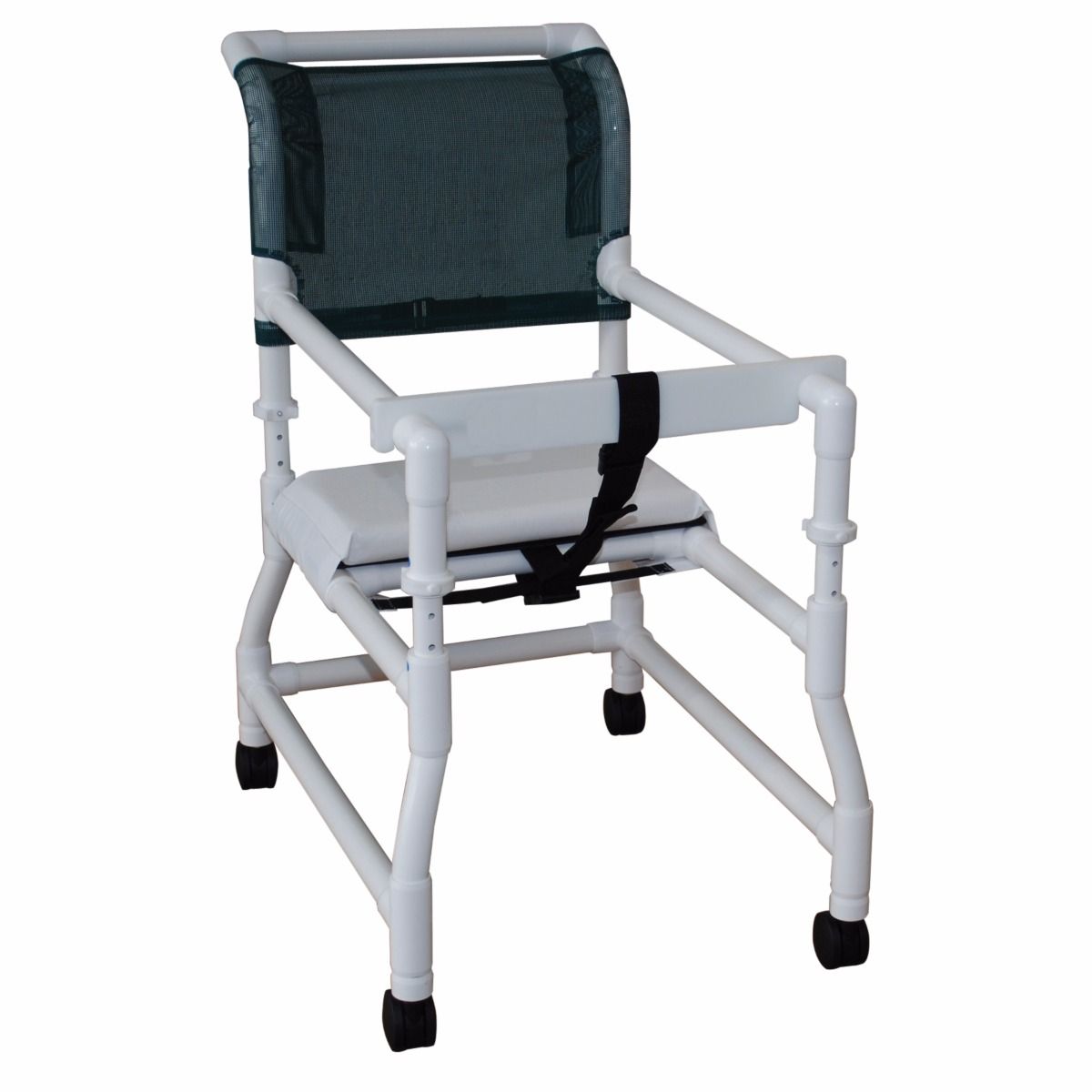
If the person with HD needs to be assessed for a wheelchair, this is typically done by an occupational therapist (OT). The OT can help determine if a wheelchair is the best aid for you and which wheelchair is the best option. This may include a wheelchair with a lower seat so that you can move the wheelchair using your feet. Or a wheelchair with a reclining back so you have additional positioning options.
Additional modifications including hill-holders (to prevent the wheelchair from rolling backward as you sit) and anti-tippers (to prevent the wheelchair from tipping backward) that may be added to your chair.
Specialty seat cushions, positioning belts, backrests, and lap cushion and lateral (side) supports can help you remain properly positioned and supported while seated.
|
|
More Information
For more information on mobility aids, talk to an occupation therapist or other medical professional.
To read more on Huntington’s disease, check out these articles:
- Huntington's Disease Overview: Causes, Symptoms, & More
- The Best Dining Aids for People with Huntington’s Disease
- 8 Bathing & Dressing Aids for Huntington’s Disease
- Huntington’s Disease: Managing Contractures
- Helpful Transfer Aids for People with Huntington's Disease
- Fall Prevention for People With Huntington's Disease
References
- Huntington’s Disease Society of America. (2016). A Caregiver Guide for HD Families. Retrieved from https://bit.ly/2yv2MbB
- European Huntington’s Disease Network. (2012). Occupational Therapy for People with Huntington’s Disease: Best Practice Guidelines. Retrieved from https://bit.ly/2wdB4PS
Medical Disclaimer: The information provided on this site, including text, graphics, images and other material, are for informational purposes only and are not intended to substitute for professional medical advice, diagnosis or treatment. Always seek the advice of your physician or other healthcare professional with any questions or concerns you may have regarding your condition.








 France
France Australia
Australia